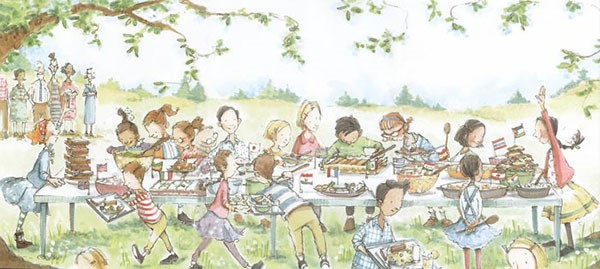‘The Earlier the Better’ Discussing Racism with Children through Stories

By Anandayu Suri Ardini, S.S., M.A.
The death of George Floyd at the hand of Minneapolis police has triggered huge protests and riots in the US. The fact that Floyd was black and killed by a white police officer has brought the concerns about racial discrimination to a critical stage. It does not need a long time for this news to spread all over the world and raise sympathy and rage of many people. Despite its horrific detail, the story of Floyd’s death has hurtfully unveiled a very crucial question which actually always exists among us but often forgotten: can we ever be free from racism?
Racism has become a dark stain on the world’s history for centuries. It is a belief that humans were not born as equal and that their superiority and inferiority are defined by their racial identity. Such a belief has been proven to be extremely dangerous as it can lead to prejudice, hatred, homicide and even multi-nation war. However, racism is also often expressed in the slightest way that many people do not even realize it. The most common examples are thinking that one particular ethnic group is better than the others; addressing a Tionghoa friend as ‘sipit’ or ‘Cina’; wishing to have white skin as it is the only beauty standard the girls know; or feeling proud to be labeled as exotic by foreigners. Smoothly internalized racism is just as dangerous as the violent one.
It is never too late nor too early to discuss about this issue. In fact, the sooner the issue of racism is introduced to young learners, the better understanding they will have and the least damage it will cause to our nation in the future. The best way to approach children to discuss about such a heavy matter is of course through stories. For children, stories are the first text and discourse they interact with. Stories are instilled with ideologies to influence children’s perspective, presented in an amusing and entertaining way through words and illustration.
Pick the stories

The first bright example is a picture book created by Jacqueline Woodson and Rafael Lopez entitled The Day You Begin. This beautiful picture book tells about children’s insecurity on their first day of school due to their different look and experience. The setting is in a classroom with awkward ambience as most of the characters feel uneasy and afraid to be negatively judged by other students because of their skin color, distinctive accent, unique facial features and uncommon lunch dishes. The story contains a message that being different is fun and you should be proud of it.
Another brilliant example is The Sandwich Swap, a picture book by Queen Rania Al Abdullah and Kelly DiPucchio which tells a story about a simple friendship between Lily and Salma who argue about whose lunch tastes better. Readers will learn that a small difference can create a huge problem when fueled with negative assumption, especially when it comes to cultural identity. Using sandwich as a metaphor is an excellent way to effectively help children understanding racial issue: peanut butter and jelly is the West, while hummus is the Middle East. Prejudice about those two kinds of food results in a huge fight among students who take side on Salma’s or Lily’s.

The Sandwich Swap
Read and don’t leave it hanging
Parents and teachers can read the books with children and follow it up with a discussion on why each character feels uneasy for being different, or why negative assumption about meal can trigger fight among friends. Parents/teachers-children dialogue takes an important role in bridging the gap between what children have understood and what they are about to understand. What I mean to say is, children might be unfamiliar with the term racism, but they know that being unfair with others just because of physical appearance is a bad thing. Teachers and parents should help them to connect the dots with the help of funny and simple images and the amusing plot.
Let’s keep in mind that children are younger adults with a privilege of limitless imagination. Reading and discussing a story can be an effective way to provide a chance for them to reflect on their feelings and experiences so they can understand the abstract concept better than if we spoon-feed them with hours of boring lecture. A thorough understanding will hopefully help to raise their awareness that every live matters and racism must be erased from the world where they grow up.
Create your own story
As a closing remark, I want to emphasize that stories, indeed, help us to process information meaningfully. However, aren’t you wondering why none of the stories above told in Indonesian context? The simplest answer is that finding well qualified Indonesian picture books embodying this issue is much harder than finding the imported ones. Then, why don’t we create it ourselves? The next article is going to talk about self-created children’s stories to provide a more relatable context for learning.
References:
Al Abdullah, Q.R., DiPucchio, K., & Tusa, T. (2010). The sandwich swap. Disney-Hyperion Books.
Woodson, J & Lopez, R. (2018). The day you begin. Penguin.





Leave a Reply
Want to join the discussion?Feel free to contribute!